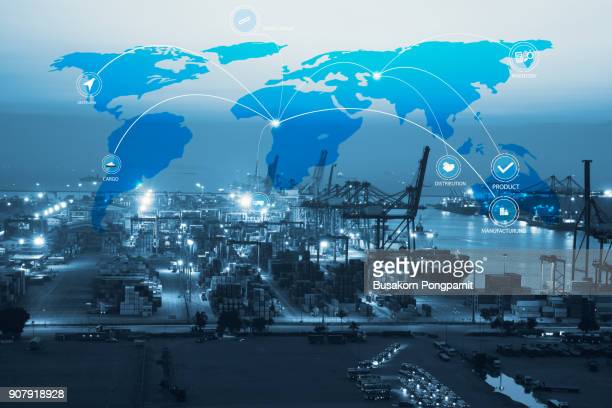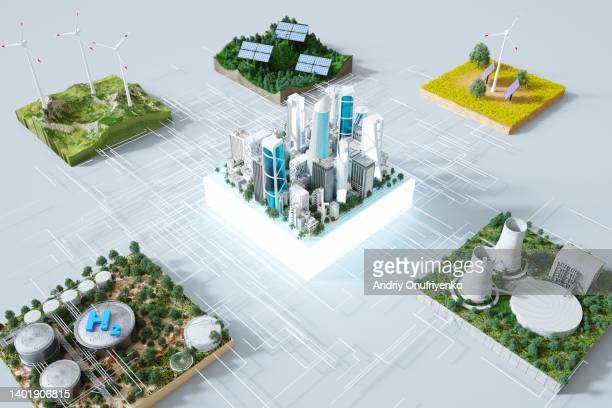
“Within the dichotomy of security and exploration lies the essence of human progress—a delicate dance between comfort and curiosity, where embracing change becomes the compass guiding us through a dynamic world.” Introduction: The human inclination towards seeking security in an…

Human-AI collaboration is a groundbreaking synergy that unites human intelligence and the computational power of AI systems. It is a dynamic partnership where human expertise, intuition, and creativity intertwine with the speed, efficiency, and analytical capabilities of AI. Together, humans and AI systems are transforming industries, redefining problem-solving approaches, and reshaping the boundaries of what we thought was achievable.

Blockchain-based supply chain management can enhance transparency, traceability, and accountability in the logistics process. This technology enables secure and real-time data sharing among all parties involved in the supply chain, improving efficiency and reducing costs. Smart contracts, distributed ledgers, and other blockchain solutions can be used to streamline the supply chain and create a sustainable and ethical business model.

Decentralized Applications (DApps) are computer applications that run on a blockchain network, allowing for greater security, transparency, and autonomy than traditional centralized applications. DApps can be used for a variety of purposes, from financial transactions and gaming to social media and governance, and are built using smart contracts and consensus algorithms.

AI and job automation have revolutionized the workforce, with machines replacing humans in many repetitive or dangerous tasks. While this can lead to increased efficiency and cost savings for businesses, it also poses significant challenges for workers whose jobs are at risk of becoming obsolete. It is important for individuals and society as a whole to adapt to these changes and ensure that people are equipped with the skills necessary to thrive in the new economy.

Sustainable and green technology are essential for achieving a more sustainable future. It involves the adoption of renewable energy sources, sustainable agriculture, green building and infrastructure, and waste reduction and management. By promoting the benefits of green technology, overcoming the challenges to its adoption, and collaborating across sectors, we can achieve a more sustainable and prosperous future for all.

The synergy between AI and Blockchain has the potential to transform industries and drive innovation. However, it is essential to approach this integration with a focus on ethics and responsibility. Best practices for ethical AI and Blockchain integration include establishing clear protocols for data privacy and security, ensuring transparency and accountability, and addressing issues of bias and discrimination.

Web3 is the next generation of the internet, designed to be more transparent, decentralized, and secure than its predecessors. Unlike Web1 and Web2, which were characterized by centralized control and limited user interaction, Web3 is built on blockchain technology and other decentralized technologies, such as smart contracts and decentralized applications.

Virtual Reality (VR) technology has the potential to revolutionize the field of mental health treatment, providing new opportunities for therapy and self-help. Research has shown that VR can be effective in treating a range of mental health conditions, including anxiety disorders, PTSD, and phobias. By providing patients with a safe and controlled environment to confront their fears and manage their symptoms, VR technology can enhance the effectiveness of traditional therapy.

Augmented Reality (AR) is a technology that allows for a digital overlay of the real world, creating an immersive and interactive experience for users. With AR, users can see computer-generated objects and information superimposed onto the real world, enhancing their perception of the environment around them. AR has a wide range of applications in industries such as gaming and entertainment, education and training, healthcare, advertising, and manufacturing. AR technology has the potential to enhance user experiences, improve visualization, increase productivity, reduce costs, and create new revenue opportunities. With continued advancements in hardware, AI integration, and user interfaces, the future of AR is exciting, with the potential to revolutionize the way we live and work.

Virtual reality (VR) is a technology that allows users to immerse themselves in a simulated environment, often through the use of a headset or other devices. With VR, users can experience everything from a roller coaster ride to a historical site visit, all from the comfort of their own home. The potential applications of VR are vast, including entertainment, education, healthcare, and more. While the technology is still relatively new and expensive, it has already had a significant impact on society and culture. As VR continues to advance, it has the potential to transform the way we learn, work, and play, unlocking new levels of creativity, innovation, and discovery.

Technology is playing an increasingly important role in transforming the way mental health treatment is delivered. From telemedicine and virtual therapy sessions to mental wellness apps and online support communities, technology is making mental health care more accessible, convenient, and effective for individuals seeking help.












